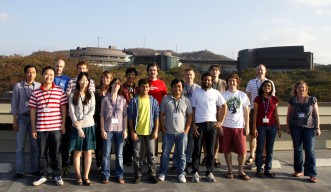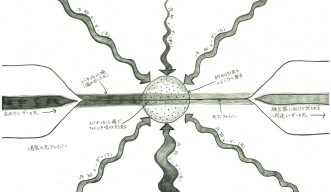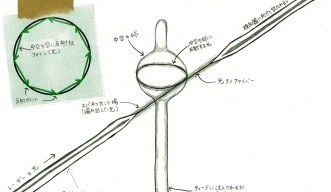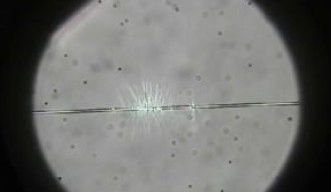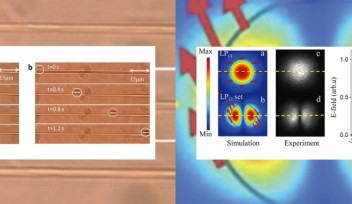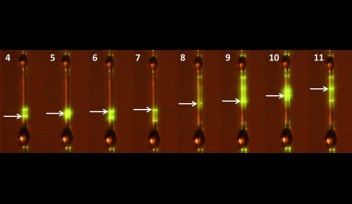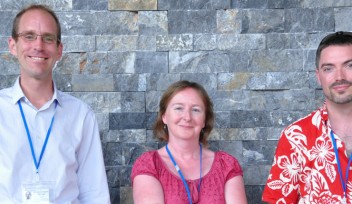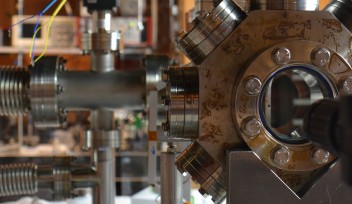New Unit Profile: Shedding Light on Light and Matter
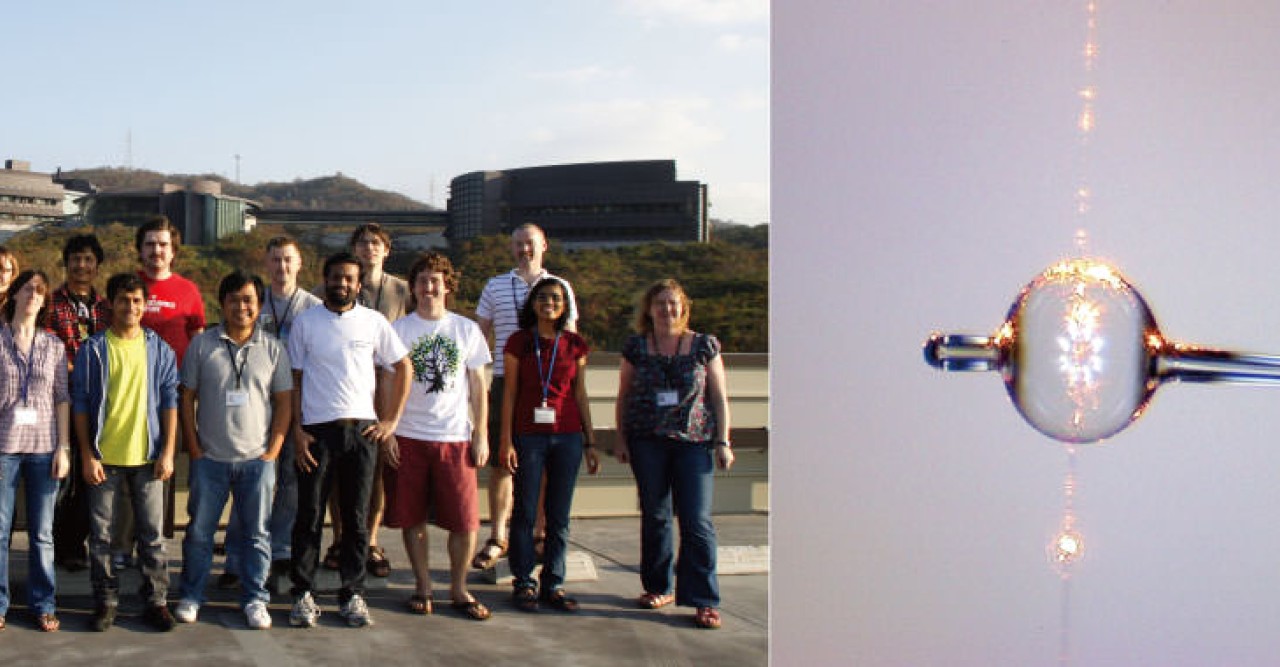
When the sky is clear and activity on the sun is at its peak, the green and red displays of aurora borealis can be seen as far south as Cork, Ireland, the former research home of Professor Síle Nic Chormaic. Also known as the northern lights, the aurora borealis is a stunning example of light interacting with matter – oxygen and nitrogen atoms in the upper atmosphere collide with electrons in solar winds to release energy in the form of photons, or particles of light. Now head of the Light-Matter Interactions Unit at OIST, Nic Chormaic and her band of seven post-docs, seven graduate students, and two technicians study less conspicuous, but no less fascinating, interactions between these two foundational components of our world.
Interactions between light and matter aren’t limited to the Northern latitudes. They are occurring all around us, from the lenses in our eyes that bend light focusing it on the retina to photosynthesis, the process by which plants use sunlight to produce nutrients from carbon dioxide and water. “We want to have a fundamental understanding of what’s going on around us”, says Nic Chormaic. But these everyday interactions can be difficult to study as incredibly large numbers of atoms and photons are involved in each case.
Nic Chormaic and her group isolate and study small numbers of photons and atoms using optical nanofibers as an interface tool between light from high-powered lasers and the sample under investigation. Nic Chormaic’s group makes optical nanofibers by heating and stretching normal optical fiber, the physical tool behind the telecommunications, to a diameter 100 times smaller than a human hair.
The members of Nic Chormaic’s unit study interactions between light and matter from several different perspectives with the ultimate goal to better understand photons, atoms, cells, and proteins – the building blocks of the world. Much of their research is based on the principle that photons are capable of physically moving matter, a phenomenon that occurs widely but on such a tiny scale that it goes unnoticed to the everyday observer.
In one experiment, the researchers use lasers to slow down and cool Rubidium atoms, a technique called laser cooling. When an atom slows down, its temperature also decreases. Air at room temperature is composed of atoms moving around at nearly 1000 kilometers per hour, but the physicists in Nic Chormaic’s unit can slow down atoms so much that they reach temperatures near zero Kelvin, or -273°C – the lowest temperature that can be reached. Using this method, Laura Russell, one of the PhD students in the unit, was able to study the effects of as few as six atoms and the photons they emitted, a system she says falls under ‘semi-classical’ physics.
While theories in classical physics can be used to explain the interactions between larger numbers of particles, quantum physics explains how particles behave differently when one or a few are around. However, the line between what interactions exhibit quantum properties and which fall under classical physics remains blurry. “I’m studying systems on the cusp of quantum physics on purpose,” says Russell. “My research is a step along the way towards a quantum computer.” In theory, quantum computers would far exceed the speed and processing capabilities of current silicon-based computers.
In a different experiment, Mary Frawley, another PhD student in the unit, uses the optical nanofibers and lasers to trap plastic balls roughly the size of human red blood cells on what she calls an ‘optical conveyor belt’. Normally light will travel down an optical fiber all the way to the other end, but the optical nanofiber Nic Chormaic’s group uses is so narrow at one point that light leaks out, what physicists call an ‘evanescent field’. This leaky light first attracts and then propels the plastic balls along the optical fiber. The group hopes to work with biologists at OIST to eventually replace the plastic balls with real cells with the goal of developing better ways to sort mixtures of cells found in biological samples.
If these two experiments didn’t prove the Light-Matter Interactions Unit’s prolificacy, others in the group are also studying how light reflects on the surface and inside of spheres made of the same glass as the optical nanofibers. Using hollow spheres filled with water and the leaky light from the nanofiber, Jonathan Ward, a post-doc in the unit, hopes to eventually develop biosensors that can detect the most minute levels of viruses or chemicals. In theory, light on the inside of a hollow sphere filled with a biological sample would reflect differently depending on whether or not a certain chemical or virus is present. The individuals working on this project also hope to work with biologists at OIST to develop these tools.
In the beginning of her career Nic Chormaic studied the collisions of atoms and electrons and the photons released from these interactions. But during her time in Innsbruck, Austria as a post-doc she began to appreciate how photons could literally shed light on a wide range of phenomena. “We take light for granted,” says Frawley. “We wake up in the morning and the sun is up, but there is so much more going on.”
Specialties
Research Unit
For press enquiries:
Press Inquiry Form










